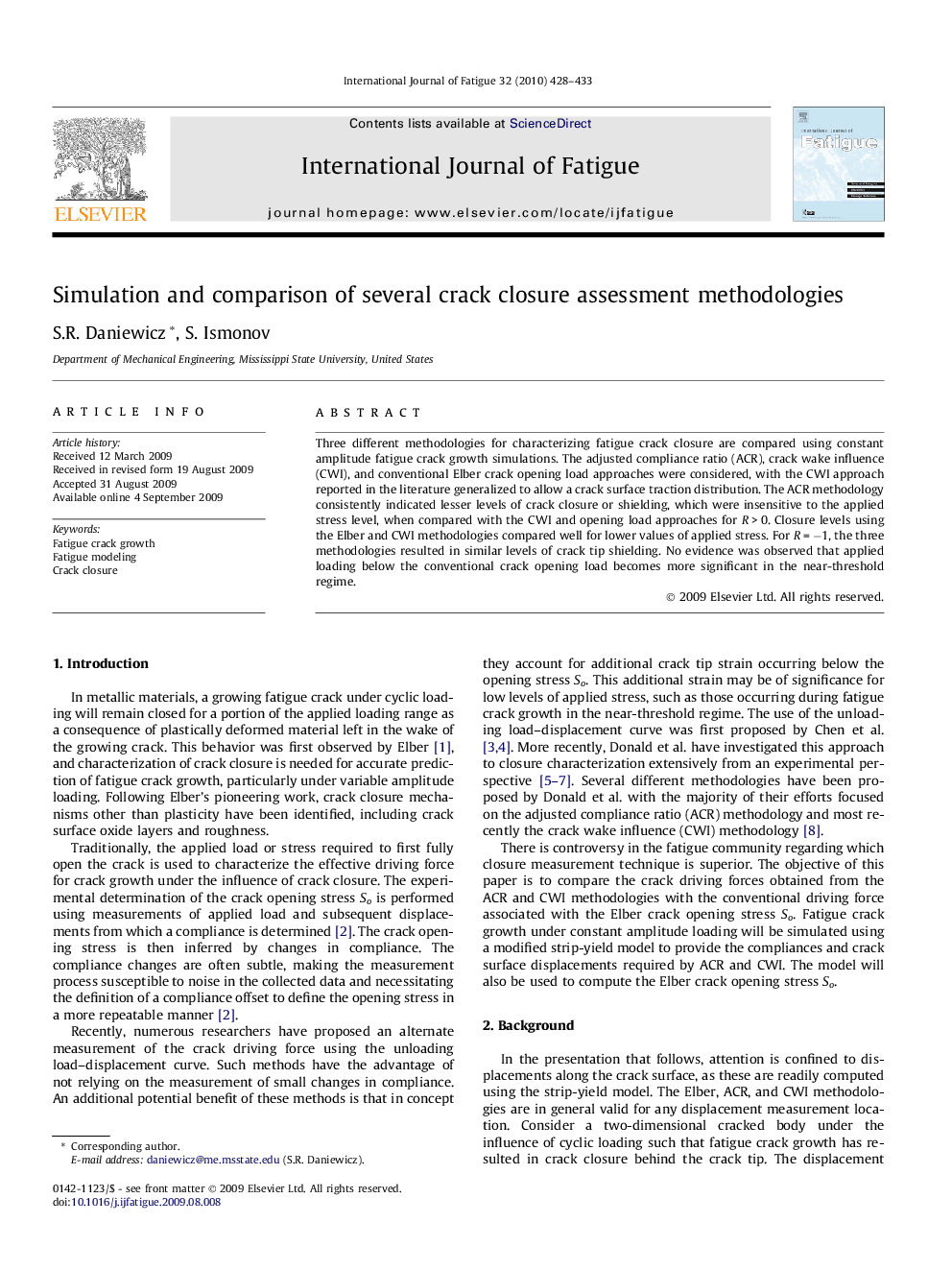| Article ID | Journal | Published Year | Pages | File Type |
|---|---|---|---|---|
| 775619 | International Journal of Fatigue | 2010 | 6 Pages |
Three different methodologies for characterizing fatigue crack closure are compared using constant amplitude fatigue crack growth simulations. The adjusted compliance ratio (ACR), crack wake influence (CWI), and conventional Elber crack opening load approaches were considered, with the CWI approach reported in the literature generalized to allow a crack surface traction distribution. The ACR methodology consistently indicated lesser levels of crack closure or shielding, which were insensitive to the applied stress level, when compared with the CWI and opening load approaches for R > 0. Closure levels using the Elber and CWI methodologies compared well for lower values of applied stress. For R = −1, the three methodologies resulted in similar levels of crack tip shielding. No evidence was observed that applied loading below the conventional crack opening load becomes more significant in the near-threshold regime.
